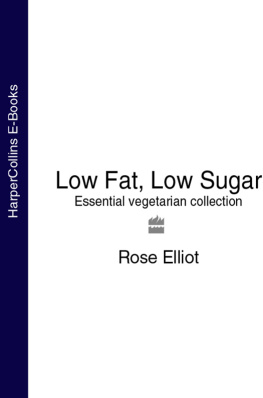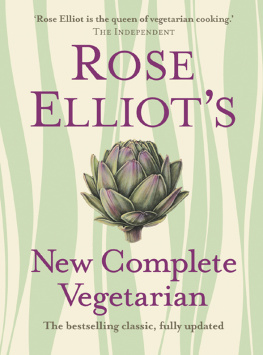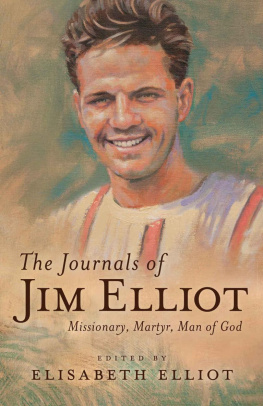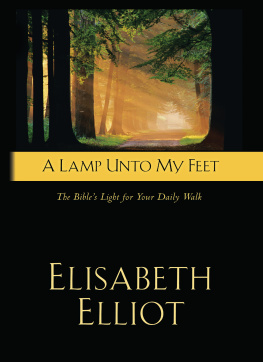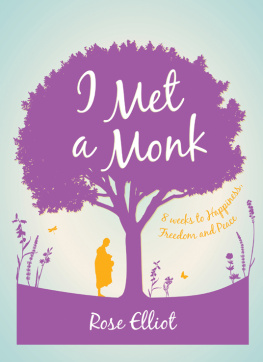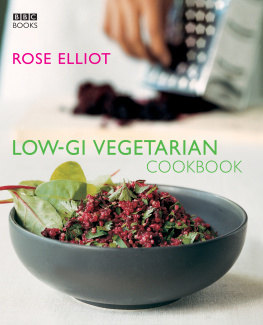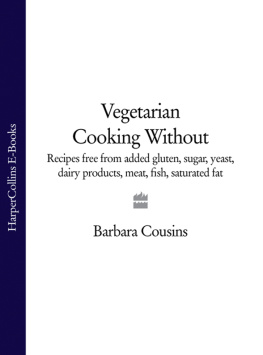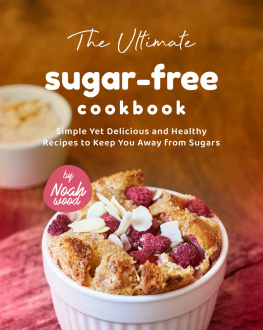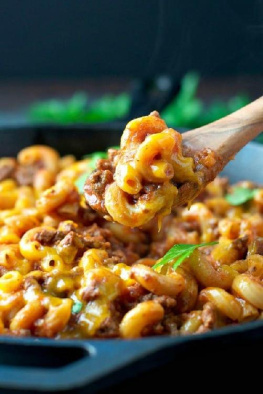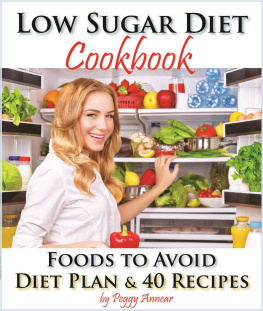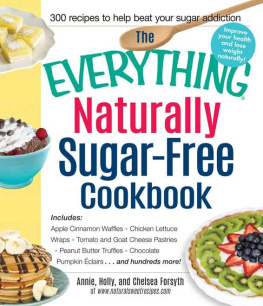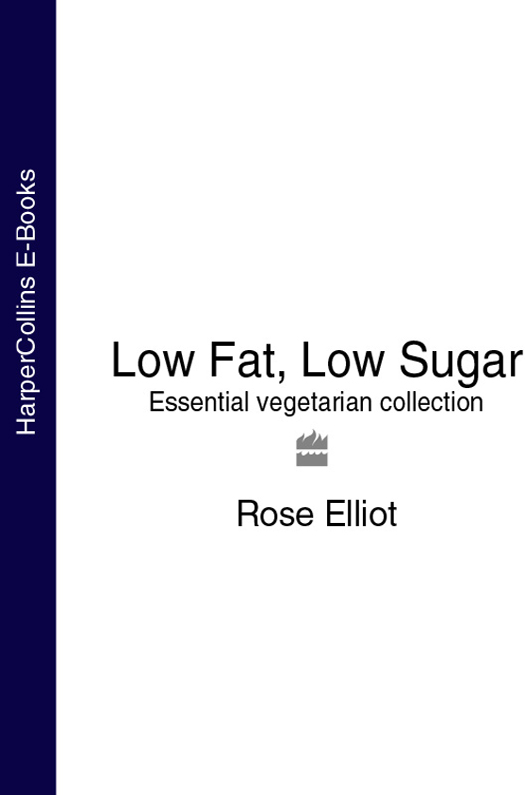contents
When my publisher suggested the idea of Low Fat, Low Sugar, the aim was to write a book which would be helpful to two groups of people: those who, for reasons of health, had to cut down on the amount of fat they were eating, and those who, for the same reason, had to reduce their sugar intake. It was not until I began work on the book and started researching the subject that I began to understand how closely these two issues our consumption of fat and sugar are linked in the overall picture of a healthy diet. And as I studied the facts I realised that a diet low in fat and sugar is not only the way to ease and perhaps even cure certain diseases but it can also help prevent them occurring in the first place. In addition, following such a diet is a simple and effective way to feel positively healthy and full of energy whilst controlling your weight even losing some if you need to. I hope therefore that this book will be useful to you, whether you have to change your diet for health reasons or want to make a positive life style change for a slimmer, healthier, happier you.
SO, WHY LOW FAT, LOW SUGAR?
The advantages of a low-fat diet for slimming, reducing cholesterol, treating heart problems and arteriosclerosis, diabetes and gall bladder problems are well known and widely advocated. There are many low-fat foods in the supermarkets and low-fat cookbooks in the bookshops. Few, if any of these, however, address the other very important issue: sugar. In fact, manufacturers of low-fat foods frequently enhance the flavour of their products with extra sugar in an effort to make them taste good. It is therefore difficult to find convenience foods that are both low fat and low sugar. Yet, as you will discover, sugar and fat are intricately linked. It doesnt make much sense to cut down on the fats only to stoke up with the sugars. I believe that a truly healthy diet is not only low in fat but low in sugar too.
SUGAR SENSE
We used to think that the main problem with eating sugar was that it rotted our teeth. In fact what happens after the sugar has left our mouth is much more serious and damaging. Sugar stimulates our pancreas to secrete insulin, one of the bodys most powerful hormones, in order to regulate the amount of sugar getting into our bloodstream. The insulin deals with the sugar by getting the body to store it as fat; and at the same time the liver produces more cholesterol. Insulin also makes it harder for the body to get rid of stored fat.
Refined carbohydrates such as bread and biscuits also produce sugar in the blood are dealt with by the body in the same way as sugar. Although wholegrain cereals such as real wholemeal (wholewheat) bread are also digested in the same way, the process is slower and the quantity of insulin needed is smaller. This is because the bran and natural fibre they contain prevents them from being broken down and absorbed too quickly: nature has provided an in-built brake. Such foods are therefore excellent sources of slow-release energy, in addition to the many vitamins and minerals they contain.
It is now thought that one of the reasons for the large increase in mature-onset diabetes in developed countries is the increased consumption of sugar and refined carbohydrates that has come about through mass production. Eating these foods regularly strains the bodys delicate mechanism for dealing with them until eventually it is unable to operate properly. It is clear that a healthy diet has to be low in sugar and in refined carbohydrates.
FAT FACTS
There are three main types of fat, each classified according to its chemical structure: saturated fat, polyunsaturated fat and monounsaturated fat. They do not all affect the body in the same way (except for piling on the pounds if we eat too much of them unfortunately they all have this in common).
Saturated fats are found mainly in animal fats meat, butter, lard, milk and eggs. Fish contains 1025 per cent. There is little saturated fat in plant oils, with the exception of palm oil and coconut oil which are often included in soft margarines. Saturated fats raise the levels of cholesterol in the blood. This can lead to heart disease and some types of cancer and the general recommendation is that we should reduce our intake of these fats as much as possible.
Polyunsaturated fats are found in greatest quantities in plants, particularly soya, corn, cottonseed, wheatgerm, sunflower and safflower. Most animal products contain very little, although fish is rich in omega-3 fatty acids which are a type of polyunsaturated fat.
Monounsaturated fats are found in many foods including nuts, butter, meat, eggs, milk and margarines, but the most concentrated source is olive oil, which contains 7090 per cent. Rape seed oil and avocados are also rich in monounsaturated fats. Neither polyunsaturated nor monounsaturated fats raise the level of cholesterol in the blood and when included in the diet both reduce the risk of heart disease.
SO WHY BOTHER TO CUT BACK ON THESE FATS?
Our intake of fat affects the amount of cholesterol in our bloodstream and our vulnerability to diseases affecting the heart and arteries, as well as our suseptibility to gallstones. Fats of any kind have more than double the number of calories per gram than either of the other main food groups proteins and sugars. In addition, calories from fat are more easily stored as fat in our bodies than calories from other sources. So a diet high in fat increases the risk of obesity, and both obesity and a diet high in fat may increase the risk of certain cancers.
In America and Britain we obtain, on average, almost 40 per cent of our calories from fat. This percentage is beginning to fall because of the availability of low-fat foods and our awareness of their value to our health. However, we have quite a way to go, because a healthy percentage is considered to be 1530 per cent. In fact in a traditional Asian diet, with its low incidence of heart disease, diabetes and cancer, fat supplies only 1522 per cent of calories.
There are some doctors who consider even 1522 per cent too high. The late Dr Nathan Pritikin, founder of the Pritikin Longevity Centers in California, set the target at 10 per cent. His methods have helped tens of thousands of people lose weight and keep it off, as well as helping reduce or eliminate medication for heart and arterial problems, high blood pressure and diabetes, and in some cases reversing the patients disease. Similar results are reported by Dr Dean Ornish, who also advocates a diet containing not more than 10 per cent fat and one that is based entirely on pulses, fruits, grains, vegetables and small quantities of fat-free dairy products. The results of these pioneering doctors are inspiring because they show how the body can heal itself, given the right diet and exercise.
HOW LOW CAN YOU GO?
A completely fat-free diet would be unhealthy. Our bodies need to take in 46 per cent of calories as fat in order to be able to synthesise the essential fatty acids necessary for health. If you kept strictly to the Pritikin diet, Dr Dean Ornishs diet or indeed the recipes given in this book, you would be getting about 10 per cent of your calories from fat; this being derived from the small amounts naturally present in whole grains, pulses, fruits, vegetables and low-fat dairy produce. The good news is that although these ingredients are low in fat, they contribute the vital nutrients which your body needs to heal itself and to function at its peak.
There are some practitioners who advocate supplementing our general diet with Essential Fatty Acids (EFAs) either in the form of oil or capsules. A diet which is very low in fat allows you the leeway to include these valuable oils if you wish. They could be particularly beneficial to vegetarians, who are not getting any of the omega-oils from fish. Look for Udos oils in health food stores, or ask the staff for advice. These oils need to be kept in the refrigerator and used up quickly.

